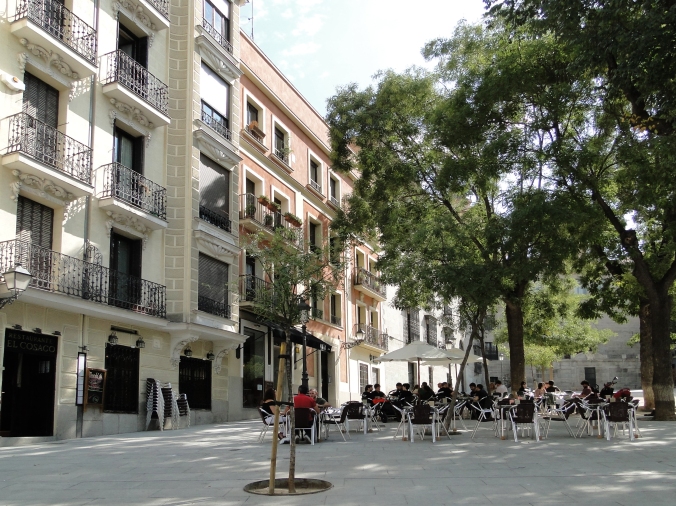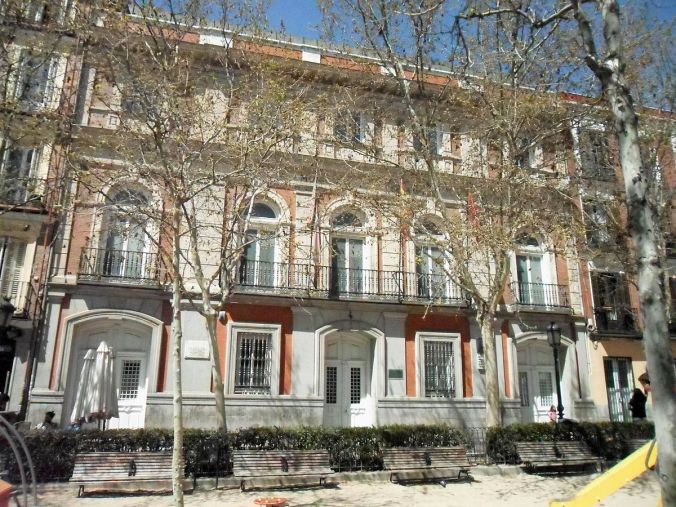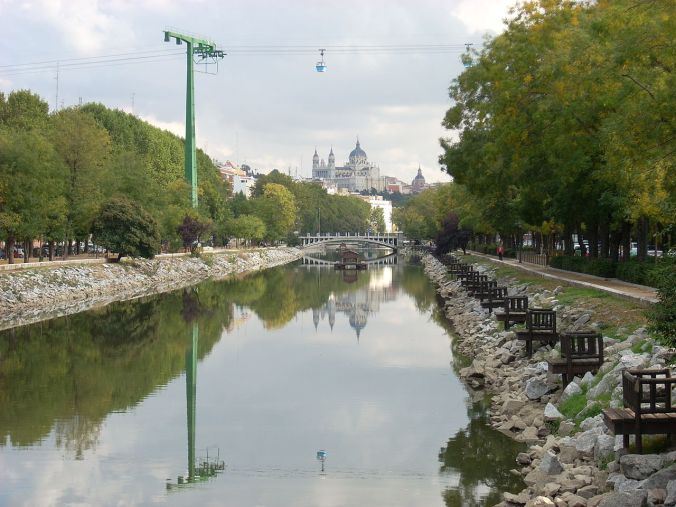In our last post we had some tips on how to find an apartment and new roommates, and today we’ve got ten places where you might find a great place to live!
Malasaña
If Madrid was going to host the Hipster Olympics, Malasaña would be the epicenter of all events. A couple of decades ago Malasaña was a bad neighborhood, full of hard drugs, rundown buildings and other signs of urban decay, but now it’s a tidy grid of coffee shops, cute restaurants, and indie and electro clubs. It’s hugely popular with expats, which means you’re more likely to find craft beer bars, American-style brunches but also higher rents. There are some cheap rooms to be had, but they tend to be in older buildings. If you need silence to sleep, this is probably not the neighborhood for you, but club kids and PYTs who came to party will be delighted with all there is to do.
Metro stops: Noviciado, Tribunal, Gran Vía,
Chueca
Chueca is known to most people as Madrid’s gayborhood and generally cute as fuck. If clothes and indie designers are your thing, then be careful, it’s easy to wipe out your bank account before you go five blocks. Shoe-hounds will have lots to look at too; just off the plaza of the metro station you’ll find Calle Augusto Figueroa, which is lined with shoe boutiques and outlet stores on both sides. Like Malasaña, Chueca is filled with cute cafes and trendy restaurants. There are some gorgeous renovated apartments for rent but they usually come at a price.
Metro stops: Chueca, Alonso Martínez
Moncloa/Arguelles

Moncloa is really close to one of the city’s biggest universities and is full of college kids. The local nightlife has a very young vibe and it’s easy to find inexpensive bars and cafes, making it a good place for a cheap and cheerful night out during the week. There’s tons of flatshares in this part of the city and it’s not impossible to rent a single room for less than 300€. Some of these rooms are in big Erasmus apartments where you will have 8 roommates and 1 and half bathrooms between you, while in others you’d only be sharing with two other people.
Metro stops: Moncloa, Arguelles, San Bernardo
La Latina

This hot spot for Sunday-fundays (read: day drinking), is noisy and it’s crowded, but it’s fun. The home of the Sunday Rastro Market has gotten more touristy, but its sun-splashed terraces and tapas bars are still popular with locals. As part of the city’s medieval quarter, you’ll find some of the oldest surviving buildings in Madrid among the narrow streets and spacious plazas. Much of the current construction dates back to the 1800s however, and many apartments have been partially or entirely renovated to increase their value. You should be able to find all the Mod Cons lurking behind those charming 19th century facades, but you might not find an elevator.
Metro stops: La Latina, Puerta de Toledo, Tirso de Molina
Lavapies
Considered up and coming neighborhood by some (which is a nice way of saying “gentrifying”), Lavapies still has a little grit and some inexpensive flat shares. It’s one of the most ethnically diverse neighborhoods in the city with an estimated 60% of the population being of foreign origin and 82 different nationalities are represented in its maze of winding streets. The police are a common sight in the main plaza but don’t let that scare you. Like most of the center, violent crime is rare and the worst thing that’s likely to happen to you is getting pick-pocketed (which is just as likely to happen around the Puerta de Sol). There’s an excellent variety of entertainment and dining options: within a ten minute walk of Plaza Lavapies you can find a vegan restaurant, an art cinema, Mercado Anton Martin, a Brazilian bar and dozens of South Asian grocers.
Metro stops: Lavapies, Anton Martin, Tirso de Molina, Embajadores
Salamanca

This is Madrid’s Upper East Side, though it’s just north of Retiro Park and only slightly east of the dead center of the Madrid. Its wide avenues, wrought iron work and turn of the century architecture makes for a pretty, tranquil picture. Originally a favorite of the city’s aspirational middle class, Salamanca is home to the IE Business School and many international Young Professionals. Calle Serrano has become synonymous with luxury brands and many designer boutiques line both sides of the street. You won’t have to leave the neighborhood to enjoy Madrid’s nightlife as it’s home to some big name clubs like 1800, Gabana and Serrano 41. Plan your nights out carefully though, as Salamanca is also home to the 50€ cover.
Metro stops: Colón, Serrano, Núñez de Balboa
Ibiza
If you’re more of a morning lark than a night owl, Ibiza might be a great fit for you. Its ordered grid of tree-lined streets borders the east side of Retiro park, which is a favorite of morning joggers across the city. Rents tend to be cheaper than they are in Salamanca and if you’re looking at the right time a nice, well-furnished two bedroom can be had for around 600€. There’s not much of a club scene but if you like to sit on a terrace and chill, there are lots of cute tabernas and bars to enjoy the evening ambience before making it home and in bed by midnight. It’s pretty peaceful at night (aside from regular city night-time noises like rubbish collection), which might make it a good choice for lighter sleepers who need quiet to get a good night’s rest.
Metro stops: Principe de Vergara, Ibiza, O’Donnell
Chamberí

Chamberí is almost a sort of “older sibling” to Malasaña and Moncloa. Like it’s hipper younger brothers, it’s got lots of restaurants, beautiful 19th century architecture, and some cute independent shops. Chamberí is a bit more peaceful however, as there aren’t quite so many clubs and a lot of families with kids and pensioners are still hanging on. Depending on where you are in the neighborhood, rents can be comparable to those in Malasaña and Chueca, but usually get a little cheaper as you move north and west. In addition to some spiffy coffee houses and modern tapas lounges you’ll find also more traditional eateries and a couple of little “cutre” (divey) joints with napkins thrown all over the floor.
Metro stops: Quevedo, Iglesia, Guzman el Bueno, Bilbao
Principe Pío
If you want the peace and quiet of a pueblo within walking distance of Plaza de España, then check out Principe Pío. This neighborhood is green, peaceful and pleasant, with plenty of supermarkets, a post office as well as a multiplex movie theater and a decent-sized shopping mall. It isn’t a wasteland of chain shops however, and there are some charming places to eat or grab a terrace to idle away some time over a glass of wine. The station is very well connected and is served by Metro lines 10 (dark blue) and 6 (gray), the R train to Ópera station, Cercanías lines C-1, C-7 and C-10, and several dozen buses. Some of the buildings are pretty new, only dating to the 1970s, which can mean slightly higher rents, but also better insulation and heating and more modern décor. The shady streets are also within easy walking to two of Madrid’s larger parks: Parque del Oeste and Casa de Campo.
Metro stops: Principe Pío
Legazpi

A Spanish friend of mine who lives here once compared his neighborhood to Tribecca in NYC. “The Tribecca of Madrid” might be a bit of a stretch but Legazpi is definitely worth a look. Culture Vultures will enjoy the proximity to the Matadero, a huge arts complex that houses an art cinema, various workshops, several indoor exhibition spaces, plus a massive court yard that regularly hosts expos and events. There are some fashionable restaurants, like Costello Río as well as nicer tapas places. This rapidly growing ward was allegedly a gangland hotspot 30 years ago but now is safer than my hometown. The streets are filled with people of all ages, including parents pushing strollers. There are some older buildings that give some blocks a gritty look, but new builds with swimming pools, tennis courts and underground car parks seem to be going up all the time. The main Metro station is connected to Line 3 and 6, and you have just a short trot up to Delicias for the Cercanías.
Metro stops: Legazpi
Happy apartment hunting! If you’ve found a place but your Spanish is a little rusty, or if you’d like some help with your search you can always make an appointment with us for a little personalized attention.